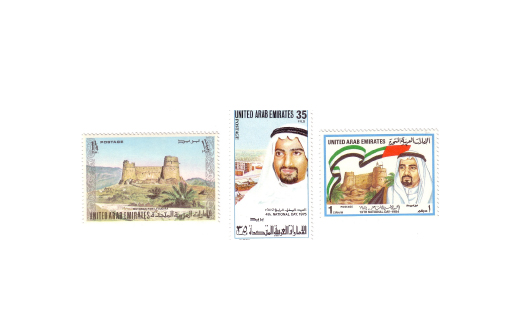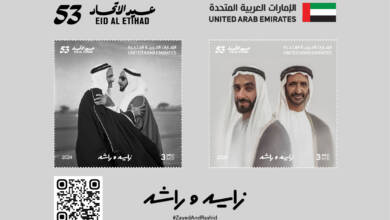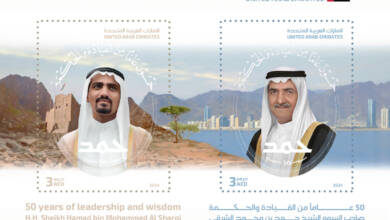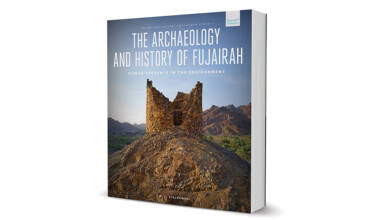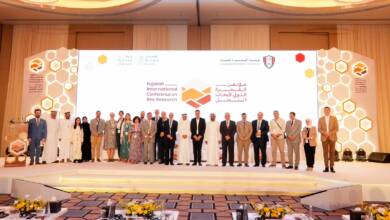Fujairah Postal stamps: Featuring Bithnah Fort
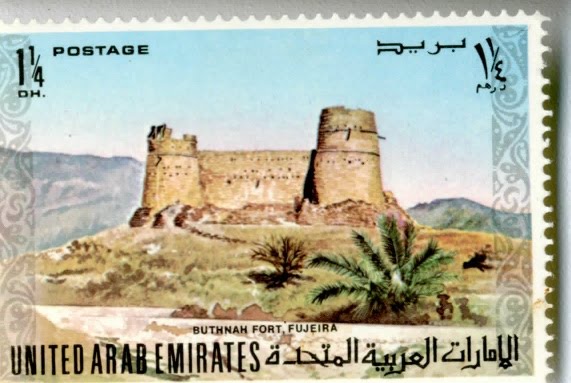
The first post office in the region was opened in Dubai in 1909. Dubai had one post office which was Indian in origin, under the Sind circle, and opened on 19 August 1909. Until 1947, Indian stamps were in use and are distinguished by the cancellation “Dubai Persian Gulf”. Pakistani stamps were used until 31 March 1948.
Britain managed the Trucial States’ external relations (a result of the 1892 ‘Exclusive Agreement’ treaty), including the management of posts and telegraphs – the states were not members of the UPO – the Universal Postal Union). The Government of India opened its first post office in Dubai in 1941 and its operation was taken over by British Postal Agencies, a subsidiary of the GPO (General Post Office) in 1948. Stamps of the time were British stamps surcharged with Rupee values until in 1959 a set of ‘Trucial States’ stamps were issued from Dubai.
Following the Partition of India, the British postal agencies in Eastern Arabia were established. The British agency stamps issued in Muscat were sold in Dubai until 6 January 1961. The agency issued the Trucial States stamps on 7 January 1961.
In Abu Dhabi, an agency was opened on Das Island in December 1960 and in Abu Dhabi City on 30 March 1963, using British agency stamps issued in Muscat. The Trucial States stamps were not used in Abu Dhabi.
As each emirate took over its own postal administration, the offices closed: Dubai on 14 June 1963; Abu Dhabi on 29 March 1964.
The northern emirates proceeded to issue a number of editions of stamps intended for the collector’s market – particularly Ajman, Umm Al Quwain, and Sharjah. Known today as Dunes, they are colorful and virtually worthless.
Fujairah part of the UAE – the first definitive set was issued by the UAE on 1 Jan 1973 and the 1¼ Dh depicted the Buthnah Fort at Fujairah on 2 Dec 1975, a set with each of the Sheikhs was produced for National Day Celebrations – the 35 F value was with the Sheikh of Fujeira. And again on 2 Dec 1984 for the National Day Commemorative, the Sheikh (now known as Emir) and the fort were included in the set.
